Several studies have tried to prove that the 1857 War of Independence was limited only to a few regions. However, a cursory look into the places and regions where the battles were fought reveal it was spread all across Bharat, from Bombay in the West to Calcutta in the East and from Rawalpindi in the North to Kerala in the South
Every Indian will feel proud on hearing of the events of the first war of Independence in 1857. This war is the most phenomenal and unparalleled event in the history of the world. It shook the whole world as it was the first challenge anywhere to the imperialist British rule by organised rebellions of Indians across the country. Lakhs of people lost their lives. The British not only perpetuated massacres but indulged in robbery as well. The war went on for more than a year.
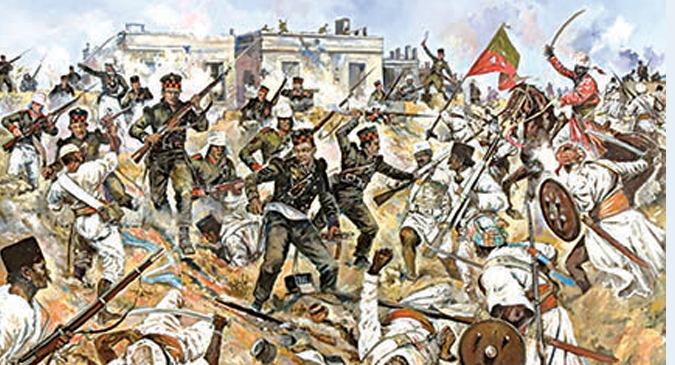
An artist impression of the 1857 War of Independence
Facts about the war of independence also give an insight into the causes that led to the war—the kind of efforts that went into it and its effect on the social life of the country. Here are a few facts about the 1857 War of Independence that is sure to increase one’s interest in the unparalleled phenomenon.
- A myth was spread that the war was limited only to Northern parts of India. But in actual, the whole of Bharat fought this war. The whole country fought as one irrespective of caste and creed. Soldiers, landlords, farmers, labourers, poor, Dalits, women and intellectuals, everyone fought together. Justice Macarthy has written in ‘History of Our Times’ that “the reality is that the revolt was affected by the people of entire Northern and North-Western regions of the country”.
- The war of 1857 was not just some eccentric indulgence of few kings and their soldiers who were in power. It was a planned collective effort. Although the war did not give the expected results and some termed it a failure, the war paved the way for a future where Indians stood up together and fought. In spite of all the brutality the Britishers heaped on the Indians, they failed to curb their desire for independence.
- It is said that the British killed the intense desire of Indians for Independence. As a matter of fact, the war was the beginning of a joint effort for Independence. It was also claimed that the British quashed rebellion as easily as flicking away a fly on one’s shoulders, but the fact remains that the war for Independence affected the future course of action of Indians across all regions.
- Those who participated and contributed to the struggle for Independence in 1857 are venerable forever. Veer Savarkar wrote, “Those who did not have courage or strength but only prayed that their nation should be free from foreign rule also played a role in this fight for Independence.”
- There are three important aspects of the 1857 war of Independence: One, Satyagraha and armed rebellions for Independence were carried out by various individuals and organisations. Two, the environment for Independence struggle was also set by those who travelled to foreign shores; environment by foreign travel and in turn helping for efforts being made in India for freedom. Third, Satyagraha and protests happened all over India across the regions and not just a few pockets.
- Sardar Panikar in the “A survey of Indian History” writes that everyone during the war of Independence had only one common desire—to throw the British out and make India independent. In this light, it certainly cannot be called a mere protest or a sporadic rebellion. It was, in fact, a great national uprising.
- Tatya Tope, during his trial at Shivpuri, told the judge, “I know very well that we will have to face death because of our uprising against Britishers. Neither I need a court nor be part of any case”.
- Vasudev Balwant Phadke, in his call to all Indians, said, “O Indians! Why should I not accept death just as Maharshi Dadheechi did? By sacrificing myself why should I not try to free you from slavery and sorrow? My final greetings to you all.”
- ‘Amrit Bazar Patrika’ in November 1879 writes about Balwant Phadke: “He was an amalgamation of the qualities of all great men who came to this world for an important cause. He was a messenger of the almighty. The greatness of his personality was akin to comparing the height of a common man to that of the Satpura or Himalayas.”
Christianisation of India
East India Company promoted Christianisation of India. Due to the mass conversions, there was a lot of dissatisfaction in army camps.
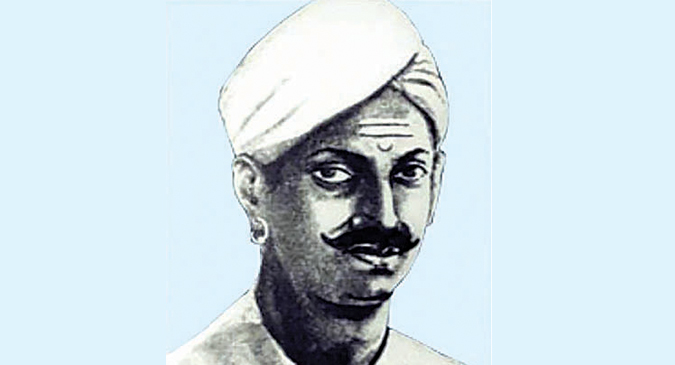
Mangal Pandey
President of the Board of Directors of East India Company said in the House of Commons in 1857: “God has handed over the great empire of India to England so as to convert all the Hindus to Christianity. For this, we should work very hard and leave no stone unturned to make sure that the flag of Christianity flies high from one end of India to other.”
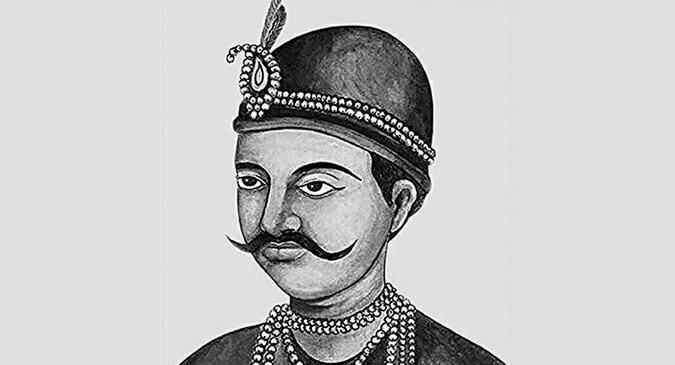
Tatya Tope
There was a dedicated scheme to convert Indian soldiers on their rolls too. A British officer of Bengal army wrote in his report: “I have been religiously converting the soldiers for the past 28 years as it was my duty to free the Indian soldiers from the claws of the devil and bring them to the refuge of the one true God.” (Source: ‘1857 War of Independence’ by Shridhar Paradkar)
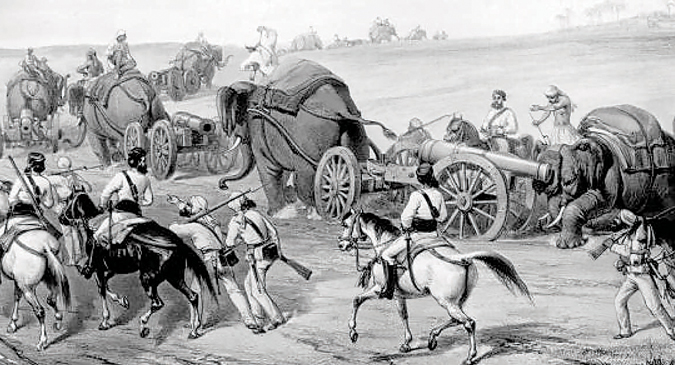
A group of Indian soldiers on their way to Delhi with elephants and cannons during the 1857 War of Independance
The War that Engulfed whole Bharat
Few studies into the 1857 War of Independence suggest that the War of Independence was limited to a few regions. However, a cursory look into the places and regions where the battles of the War of Independence were fought, tell that it was spread all across Bharat, from Bombay in the West to Calcutta in the East and from Rawalpindi (now in Pakistan) in the North to Kerala in the South.
Here is the list of major cities where the battles for the War of Independence were fought: Delhi, Lucknow, Allahabad, Azamgarh, Fatehpur, Banaras (Varanasi), Gorakhpur, Agra, Mathura, Kanpur, Sitapur, Farrukhabad, Jaunpur, Mainpuri, Etawah, Eta, Aligarh, Meerut, Muzaffarnagar, Bareilly, Moradabad, Shahjahanpur, Badaun, Saharanpur, Bijnor, Almora, Bageshwar, Champawat, Nainital, Pithauragarh, Udham Singh Nagar, Banda, Hamirpur, Jhansi, Jalna, Sagar, Khandwa, Kharguna, Burhanpur, Badwani, Nimach, Udaipur, Jodhpur, Mount Abu, Ajmer, Dev, Dhar, Indore, Agar, Jhabua, Rajgarh, Ratlam, Ujjain, Guna, Sehore, Holwar, Kota, Banswara, Pratapgarh, Chittorgarh, Gwalior, Calcutta, North 24 Parganas, Patna, Ranchi, Kangra, Amritsar, Peshawar, Jalandhar, Ludhiana, Hoshiarpur, Gurdaspur, Rawalpindi and Sialkot (both in Pakistan now), Mahendragarh, Ambala, Ferozepur, Peshawar, Sahiwal, Chittagong, Dhaka (in Bangladesh now), Jalpaiguri, Bhagalpur, Hazaribagh, Palamu, Singhbhum, Kolhapur, Karochi, Bombay (Mumbai), Hyderabad and Nagpur.
Major efforts to overthrow the British in Southern India
The reasons and efforts to overthrow the British during the 1857 War of Independence were as exceptional in the Southern parts as they were in the Northern regions. As Savarkar said, safeguarding our Swaraj and Swadharm were the primary goals of the war of independence. The book on the 1857 war of Independence by Shridhar Paradkar, lists the instances of revolt against the British in the Southern parts of Bharat.
- Rangoji Bapu revolts against the British in Satara in 1856
- May 1857 rebellion of the soldiers of the Pune Armed force
- Revolt of the soldiers of the Mumbai platoon in 1857
- Invasion of Sirpur under the command of Bhima Naik in Khandesh in 1857
- Armed rebellion of the soldiers of 27th Platoon of Kolhapur in July 1857
- Tatya Tope attacks Kargunda in August 1858
- Attacks on British troops by Bhagoji Naik in Nashik in October 1857 and again in November 1858
- Joglekar leads the attacks on the British brigade in December 1857 at TrimbakeshwarRebellion against the British in March 1858 in Bheed
- 1858-59 Rebellion against the British troops in Sawantwadi
- Armed rebellion under the command of Radhakrishna Dandsen in February 1857 in Meedi in Parla village in Kurnool district of Andhra
- June 1857 Revolt of the 30th Platoon in Andhra’s Kadapa
- Rebellion of the soldiers of the 1st Cavalry of the British Army at Hyderabad
- Hoisting of the flag of Independence in July 1857 in Machilipatnam and revolt against British troops in Rajahmundry
- Attack on British troops in Jaggaiahpet in Andhra
- Organising forces against the British in Jamkhandi and Bijapur in Karnataka
- Armed revolt of the Rohilis in Aurangabad and Bhils in Vizpur against the British Army in1859-60
- Attack on British troops by the army of Shorapur in February 1857
- Attack on British Colonel Davidson at Nizam Darbar in 1859
- Battle at Bidar in Karnataka between the British troops and the army of Ramrao, Nephew of Chhatrapati Shahu of Satara, in 1867
- Attack on British troops in November 1857 in Mudol
- Anti-British demonstrations in Mysore state in 1858
- Armed rebellion of the soldiers of 8th Madras Platoon in July 1858 in Bangalore
- Platoon of Indian soldiers from 29 Infantry in Belgaum’s rebel against the British in 1857
- Attack against the British regiment in Karwar in 1858
- British representative Manson was beheaded in November 1858 in Sureban in Belgaum district of Karnataka
- King of Nargund in Karnataka rebels against the British rule
- Bheemrao of Mundi leads the attacks on the British in 1858
- Dipaji Rane leads the revolt against the British in 1858 in Goa
- 18th platoon of the British army revolts in Vellore (Madras)
- Revolutionary uprising in Chingalpet in Madras in 1858
- Armed rebellion of 25th and 45th platoon in Kerala in July 1857
Veer Savarkar on the 1857 War
Veer Savarkar’s work titled ‘1857 War of Independence’ is the first book of history in the world which was banned even before being published. This book was written by Savarkar in 1909 utilising the books and references in the India Office Library in London. He dedicated 1.5 years studying the British Archive and documents related to the 1857 uprising. During the next few decades, his book became famous as ‘the Gita of Revolutionaries’ and was translated into many languages. It was sold at a premium price of Rs 300 per copy in those days. This book was also published by Madam Kama, Lala Hadayal, Subhash Chandra Bose and Bhagat Singh in the subsequent days. In the camps of Azad Hind Fauj, studying this book on 1857 war of Independence was mandatory.
In 1908, Savarkar wrote in ‘Talwar’, published from France: “While the objective of my book is certainly to bring out the facts and historical truths, my objective is also to kindle the fire to free India in the conscience of every common man of India and initiate the second war of Independence.”
(With inputs from VSK Bharat)


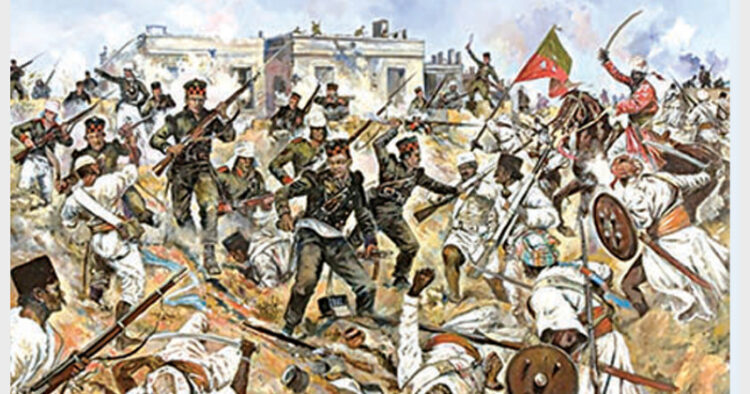










Comments